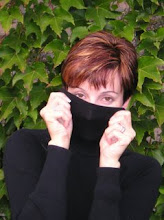December 13
"Vierge au Lys" by Eugène Delaplanche (1878)
Hymne à la Vierge
Music composed by Pierre Villette (1926-98),
words by Roland Bouhéret (1930-95),
and performed by The Vasari Singers
O toute belle, Vierge Marie,
Votre âme trouve en Dieu
Le parfait amour.
Il vous revêt du manteau de la Grâce
Comme une fiancée
Parée de ses joyaux.
Alléluia, Alléluia,
Je vais chanter ta louange, Seigneur,
Car tu as pris soin de moi,
Car tu mʼas envelopée du voile de lʼinnocence.
Vous êtes née avant les collines,
O sagesse de Dieu
Porte du Salut.
Hereux ce lui qui marche dans vos traces,
Qui apprête son coeur
A la voix de vos conseils.
Alléluia, Alléluia,
Je vais chanter ta louange, Seigneur,
Car tu mʼas faite, avant le jour,
Car tu mʼas fait précéder le jaillissement des sources.
Avant les astres
Vous étiez présente
Mère du Créateur
Au profound du ciel
Quand Dieu fixait les limites du monde
Vous partagiez con coeur
Etant à lʼoeuvre avec lui.
O toute belle Vierge Marie.
While in Quebec City, my eldest daughter and I made another pilgrimage. We visited The Musée des Ursulines, which is built on the site of the very first school ever established in what was then known as "New France".
The Ursuline Order of Roman Catholic nuns was founded in Italy in 1535, and was one known as La Compagnie de Saint-Ursule. In 1639, at the request of the Jesuit priests, three Ursulines arrived in Québec City. One of those women was the 40-year-old widowed Marie de l’Incarnation, born Marie Guyart.
 |
| Marie Guyart |
The Ursuline Order of Roman Catholic nuns was founded in Italy in 1535, and was one known as La Compagnie de Saint-Ursule. In 1639, at the request of the Jesuit priests, three Ursulines arrived in Québec City. One of those women was the 40-year-old widowed Marie de l’Incarnation, born Marie Guyart.
Marie's husband had been a silk merchant, and died when his wife was just nineteen years old, leaving her to care for her infant son, Claude. Marie was also left with a struggling business to run-- which she did until it became successful enough for her to sell, thus enabling her to return to her family home. There, she supported herself and her child with the beautiful embroidery that would later become so important in her religious and teaching career.
Guyart experienced a mystical vision on March 24, 1620, which set in motion a series of events that would completely transform her life. In 1621, she decided to enter the Ursuline monastery in Tours. This cannot have been an easy decision, as it meant leaving her young son to be raised by another family. Claude was so completely distraught by being abandoned by his mother, he attempted to storm the monastery with a band of schoolboys. It was not until many years later, when he was ordained as a Benedictine Monk, that he re-established contact with his mother, and the two were able to correspond about their spiritual and emotional trials
 When these women arrived in The New World in August, 1639, Quebec was hardly a town: only six houses stood at the foot of the mountain, on the spot that had been chosen by Samuel de Champlain thirty-one years earlier. They established their convent, and moved into a stone building in the upper town in 1642, on the site where the modern buildings are situated today. Their school for girls gradually flourished, and they soon built a boarding house to accept live-in students.
When these women arrived in The New World in August, 1639, Quebec was hardly a town: only six houses stood at the foot of the mountain, on the spot that had been chosen by Samuel de Champlain thirty-one years earlier. They established their convent, and moved into a stone building in the upper town in 1642, on the site where the modern buildings are situated today. Their school for girls gradually flourished, and they soon built a boarding house to accept live-in students. Because the school exclusively taught female students, the curriculum focused on what were considered "the female arts", with an emphasis on sewing and needlework. The craftsmanship in all of the articles on exhibition in the museum is nothing short of spectacular. Samplers and baby garments were created with as much care and attention to detail as the elaborate altar pieces and religious robes. Of distinction is the collection of liturgical vestments and altar frontals, which include examples of the most remarkable three-dimensional embroidery techniques: the silver, gold and silk threads are padded-up and reinforced by horse hair, which is then completely covered over by the exquisite stitching. The students were taught a complete range of artistic subjects, including drawing, painting, sculpting, and the playing of a wide variety of musical instruments.
Because the school exclusively taught female students, the curriculum focused on what were considered "the female arts", with an emphasis on sewing and needlework. The craftsmanship in all of the articles on exhibition in the museum is nothing short of spectacular. Samplers and baby garments were created with as much care and attention to detail as the elaborate altar pieces and religious robes. Of distinction is the collection of liturgical vestments and altar frontals, which include examples of the most remarkable three-dimensional embroidery techniques: the silver, gold and silk threads are padded-up and reinforced by horse hair, which is then completely covered over by the exquisite stitching. The students were taught a complete range of artistic subjects, including drawing, painting, sculpting, and the playing of a wide variety of musical instruments. The girls of New France were exceptionally fortunate, because the nuns also believed in instructing them in subjects that were traditionally reserved for boys. As well as learning cooking and nutritional health, they were given lessons in chemistry and physics. They were taught ways to prevent and treat illness and injury, and also received courses in botany and biology. They were taught to run an economically sound household, and the complex mathematical skills required to ensure that this would be a certainty. The idea of giving females a complete and well-rounded education was a revolutionary one in the early 1600's. It is astounding to think of the kind of lives the average female faced in Europe at that time by comparison: such teaching was reserved for the highest nobility, and even then, women were rarely (if ever) given the opportunity to actually utilize the knowledge that they had. Advanced schooling made them "marriage-able", and almost never "power-ful". The colony of New France was a whole new playing-field, however. Establishing and maintaining a self-sustaining life was unthinkably hard, and all people-- men, women and children alike-- had to use every wit and ounce of stamina they had in order to survive. In this way, women DID become "power-ful", as clever, skilled and practical females provided a strong foundation upon which to build a new society.
The girls of New France were exceptionally fortunate, because the nuns also believed in instructing them in subjects that were traditionally reserved for boys. As well as learning cooking and nutritional health, they were given lessons in chemistry and physics. They were taught ways to prevent and treat illness and injury, and also received courses in botany and biology. They were taught to run an economically sound household, and the complex mathematical skills required to ensure that this would be a certainty. The idea of giving females a complete and well-rounded education was a revolutionary one in the early 1600's. It is astounding to think of the kind of lives the average female faced in Europe at that time by comparison: such teaching was reserved for the highest nobility, and even then, women were rarely (if ever) given the opportunity to actually utilize the knowledge that they had. Advanced schooling made them "marriage-able", and almost never "power-ful". The colony of New France was a whole new playing-field, however. Establishing and maintaining a self-sustaining life was unthinkably hard, and all people-- men, women and children alike-- had to use every wit and ounce of stamina they had in order to survive. In this way, women DID become "power-ful", as clever, skilled and practical females provided a strong foundation upon which to build a new society.It was not only the French colonist families that desired their daughters to be educated by the Ursuline nuns. One of the things that I admire the most about the life and work of Marie de l’Incarnation was her acceptance of, and devotion to her many Aboriginal Canadian students. She was soon able to teach these young girls and women in the Huron, Algonkian, Montagnais, and Iroquois tongues.
When we visited the convent, chapel and final resting place of Marie de l’Incarnation, we were guided by a member of the "modern" Ursuline Order. She told us that the favourite school-room of their founding Mother was outdoors, under a particular ash tree. She would sit, and the Native children would gather around her, in the atmosphere where they felt most comfortable. The ash tree lived for many, many more years than Marie de l’Incarnation, who passed away on April 30, 1672. Once it fell, however, it was severed into many pieces, which were passed on to other churches and kept as holy relics.
 I had a wonderful chat with our guide, and our conversation deepened when we discovered we were both teachers. I told her a little bit about the extremely challenging year I had just experienced with the community class I had taught, and she was full of good counsel and encouragement. She eventually pushed a small prayer pamphlet into my hands, and invited me to sit down in a beautifully carved wooden chair, beside Marie de l’Incarnation's tomb. She left me to it, and I was able to enjoy ten or fifteen minutes of silent solitude, which was remarkably refreshing and surprisingly restful, considering the emotional turbulence that had been plaguing me since school had let out just a few short days before.
I had a wonderful chat with our guide, and our conversation deepened when we discovered we were both teachers. I told her a little bit about the extremely challenging year I had just experienced with the community class I had taught, and she was full of good counsel and encouragement. She eventually pushed a small prayer pamphlet into my hands, and invited me to sit down in a beautifully carved wooden chair, beside Marie de l’Incarnation's tomb. She left me to it, and I was able to enjoy ten or fifteen minutes of silent solitude, which was remarkably refreshing and surprisingly restful, considering the emotional turbulence that had been plaguing me since school had let out just a few short days before.As I was departing the chapel, the tiny nun approached me to say goodbye, and asked me if I was feeling better. I said that I was, and promised that I would persevere and make positive changes in my teaching career.
It was then that she pointed back towards the chair that I had been sitting in.
"That cross?" she said, in her deeply accented English. She pointed to a tiny carved detail, which was an insertion of blond wood, in contrast to the rest of the chair which was stained a much deeper colour.































1 comment:
I'm tearful now... What a special experience for you! That kind of encouragement is so good. I remember once being embraced by the Catholic Archbishop in Trinidad, who blessed me for the work I was doing. I had no idea he even knew about it, and I never expected to be thanked (he pounced on me at a funeral!) but it gave me a real lift - even though I'm not remotely Catholic :) Somehow feeling that some of our poorly paid (and unpaid) struggles might be part of a greater struggle is good, no?
Post a Comment